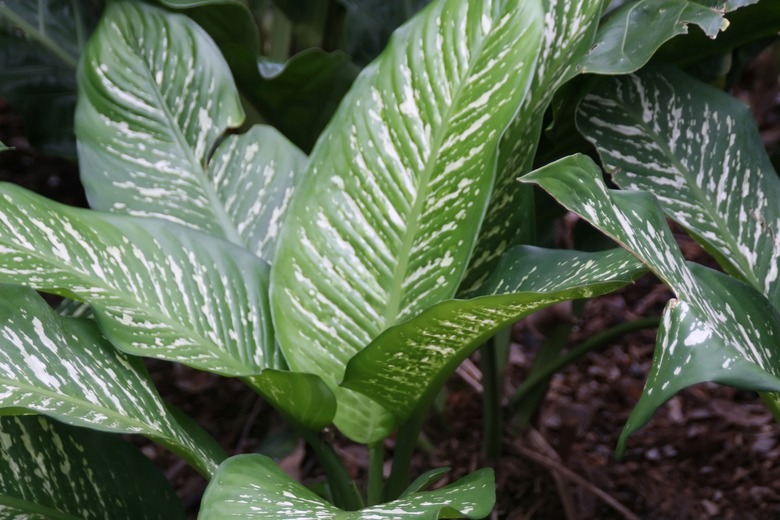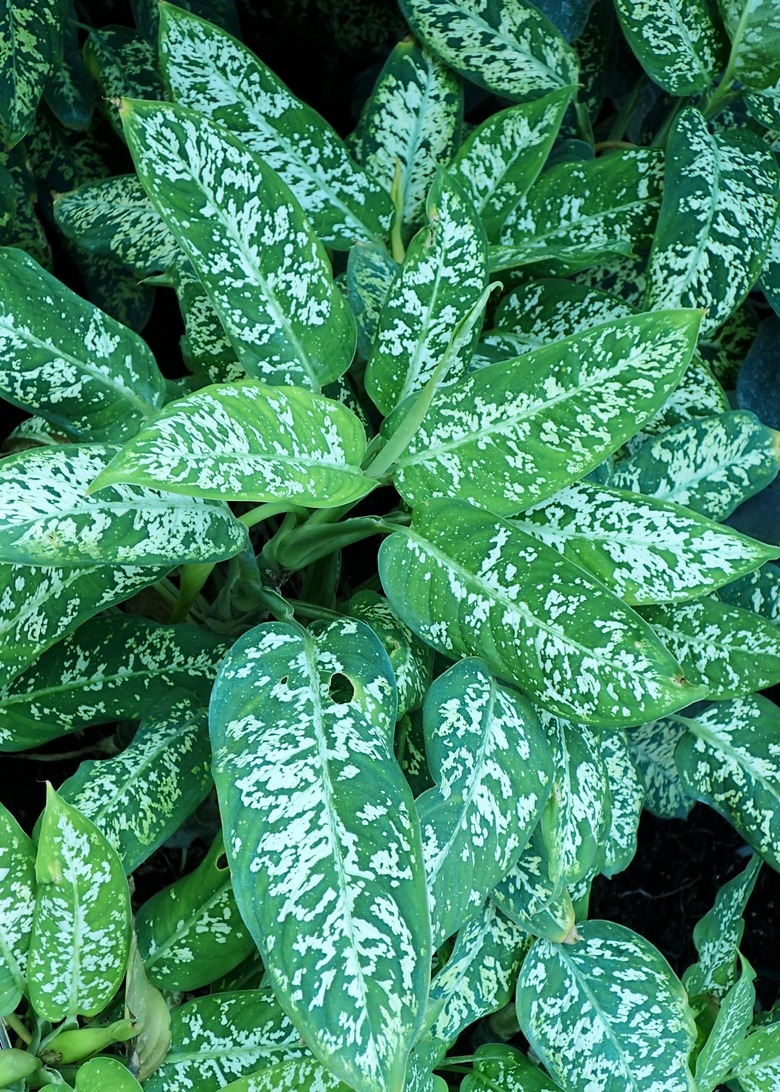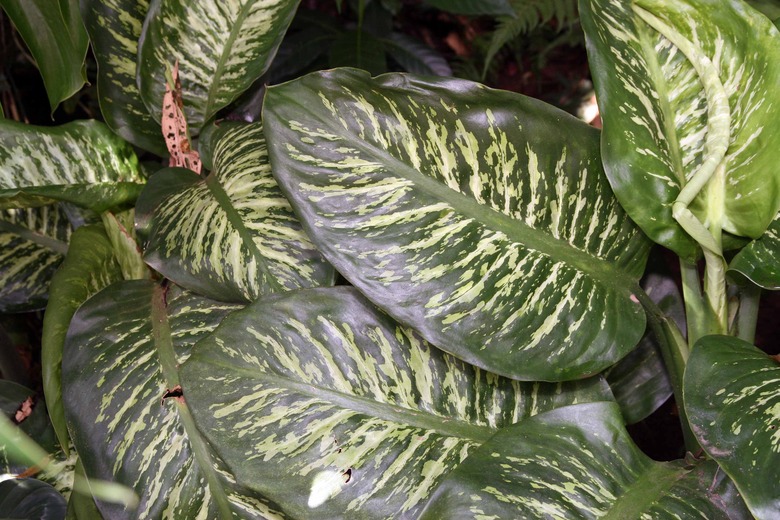The Varieties Of Dieffenbachia
Dieffenbachias (Dieffenbachia spp.) are broadleaf evergreen plants native to Central and South America that are in the same family as philodendron and are often grown as low-maintenance houseplants.
Dieffenbachia plants are also known as "dumbcanes," because they contain substances that can interfere with the ability to speak if they are ingested. Dieffenbachia plants are winter hardy in U.S. Department of Agriculture plant hardiness zones 10 to 12.
Warning
Dieffenbachia leaves contain small crystals that, if ingested, can cause throat issues and numb the vocal cords for up to two weeks. Therefore, these plants should not be kept in homes where there are children or animal companions. Wash your hands thoroughly after handling these plants.
Different Types of Dieffenbachias
Dieffenbachias are grown for their variegated leaves that may have splotches or stripes and contrasting veins. These species are capable of flowering, but the flowers are not showy and are rarely seen on indoor plants.
Propagation of these plants is usually done by division or by taking stem cuttings.
Let's take a look at some dieffenbachia plant types.
Dieffenbachia seguine
Formerly known as Dieffenbachia maculata, Dieffenbachia seguine is also known as gold dieffenbachia and spotted dumbcane. This species of dieffenbachia has a mature height between 3 and 8 feet.
There are several cultivars of Dieffenbachia seguine from which to choose, including Rudolph Roehrs (Dieffenbachia seguine 'Rudolph Roehrs,' zones 10 to 12), which has yellow leaves with green veining and subtle white splotches. Arvida (Dieffenbachia seguine 'Arvida,' zones 10 to 12) is another cultivar distinguished by its heavy variegation.
Dieffenbachia amoena
Another type of dieffenbachia, Dieffenbachia amoena goes by many common names, including giant dumbcane and leopard lily. It has a height between 6 inches and 5 feet.
Cultivars of Dieffenbachia amoena include Hilo (Dieffenbachia amoena 'Hilo,' zones 10 to 12), which has large and pointed leaves, lime green variegation and white veins, and Camille (Dieffenbachia amoena 'Camille,' zones 10 to 12), the leaves of which have a creamy yellow center and green edges.
Tropic Snow (Dieffenbachia amoena 'Tropic Snow,' zones 10 to 12) is another cultivar that has dark green leaves with white variegation around the veins. This cultivar grows better in low light than other dieffenbachia varieties.
Tip
Dieffenbachia cultivars differ in size as well as leaf patterns, intensity of variegation and vein and color.
Dieffenbachia Plant Care
Dieffenbachia plants grow best when kept at temperatures between 60 and 75°F. These tropical plants also require plenty of humidity and bright, indirect light.
Dieffenbachias should be grown in well-draining potting soil and watered when the soil has dried out. Overwatering these plants often results in root rot.
Larger varieties of dieffenbachia that can grow between 6 and 8 feet tall need to be trimmed to maintain their size, though a more compact variety may not need any pruning. If you need to repot a dieffenbachia plant because it has outgrown its container, it is best to do so in the spring.
From March through September, feed your dieffenbachia with a houseplant fertilizer formulated for foliage plants. Avoid overfertilizing these plants, however, as this can burn the leaf margins.


